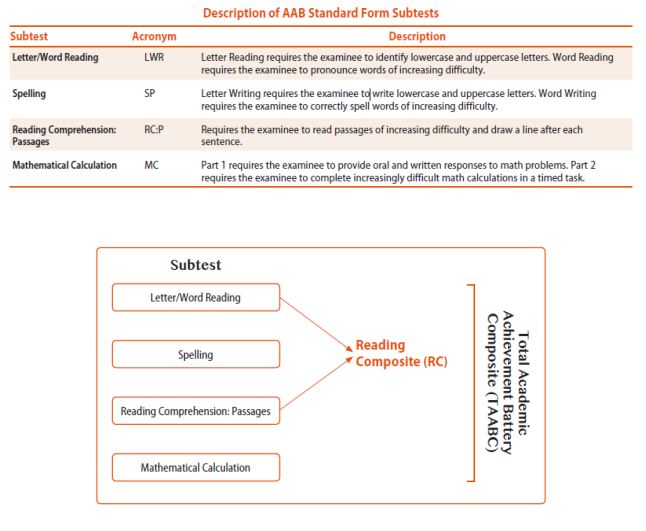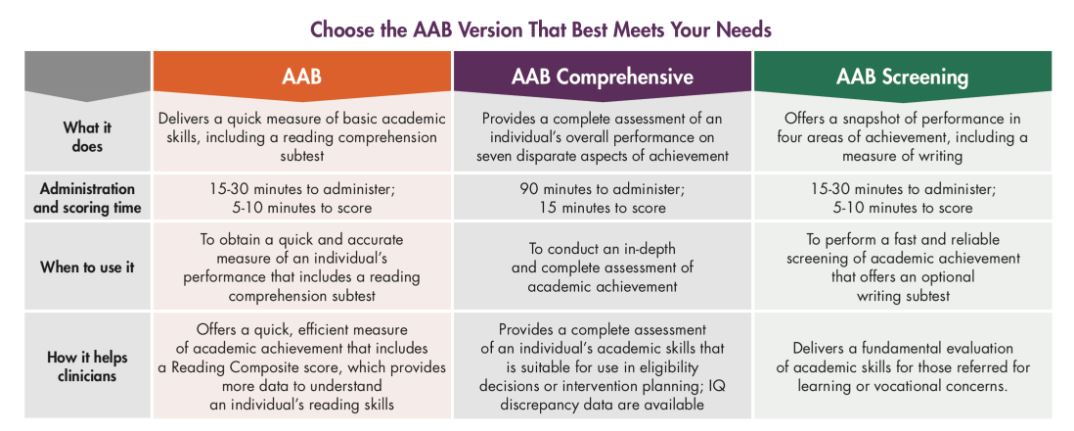Assesses basic academic skills of reading, spelling, and math
Melissa A. Messer, MHS
Measure Basic Reading, Math, Spelling, and Reading Comprehension Quickly to Get an Accurate Overview of an Individual's Academic Skills
The AAB Standard Form is ideal for evaluating fundamental academic skills in children and adults during an initial evaluation, during reevaluation, or when working with those referred for learning, behavior, or vocational concerns.
Features and benefits
- Measures basic academic skills, including basic reading, spelling, mathematical calculation, and reading comprehension.
- All four subtests are included in one easy-to-use response booklet. New users can learn how to administer quickly with the included Fast Guide.
- Developed using academic standards set by the National Council of Teachers of Mathematics, the National Council of Teachers of English, Common Core, and Reading First.
- Reading subtests combine to provide a Reading Composite, which provides more data to understand an individual's reading skills.
- A Total Composite Score provides the user with a snapshot of an individual's academic performance.
Where to use
Results obtained from the AAB can be used to identify academic strengths and weaknesses, inform decisions regarding eligibility, and aid in planning interventions.
- For school-aged children (ages 4-19 years), the results may aid in decision making for inclusion in special education services or other targeted interventions.
- For college-aged students, AAB scores can be used in placement and/or accommodation decisions.
- For adults ages 18-85 years, AAB scores can help identify individuals with special needs who may qualify for disability services or those seeking vocational services.
Can be used for large-scale screenings in correctional or human resources settings. The Standard Form is a subset of the Comprehensive Form, meaning clinicians can administer the Standard Form first to see if additional testing is necessary.

